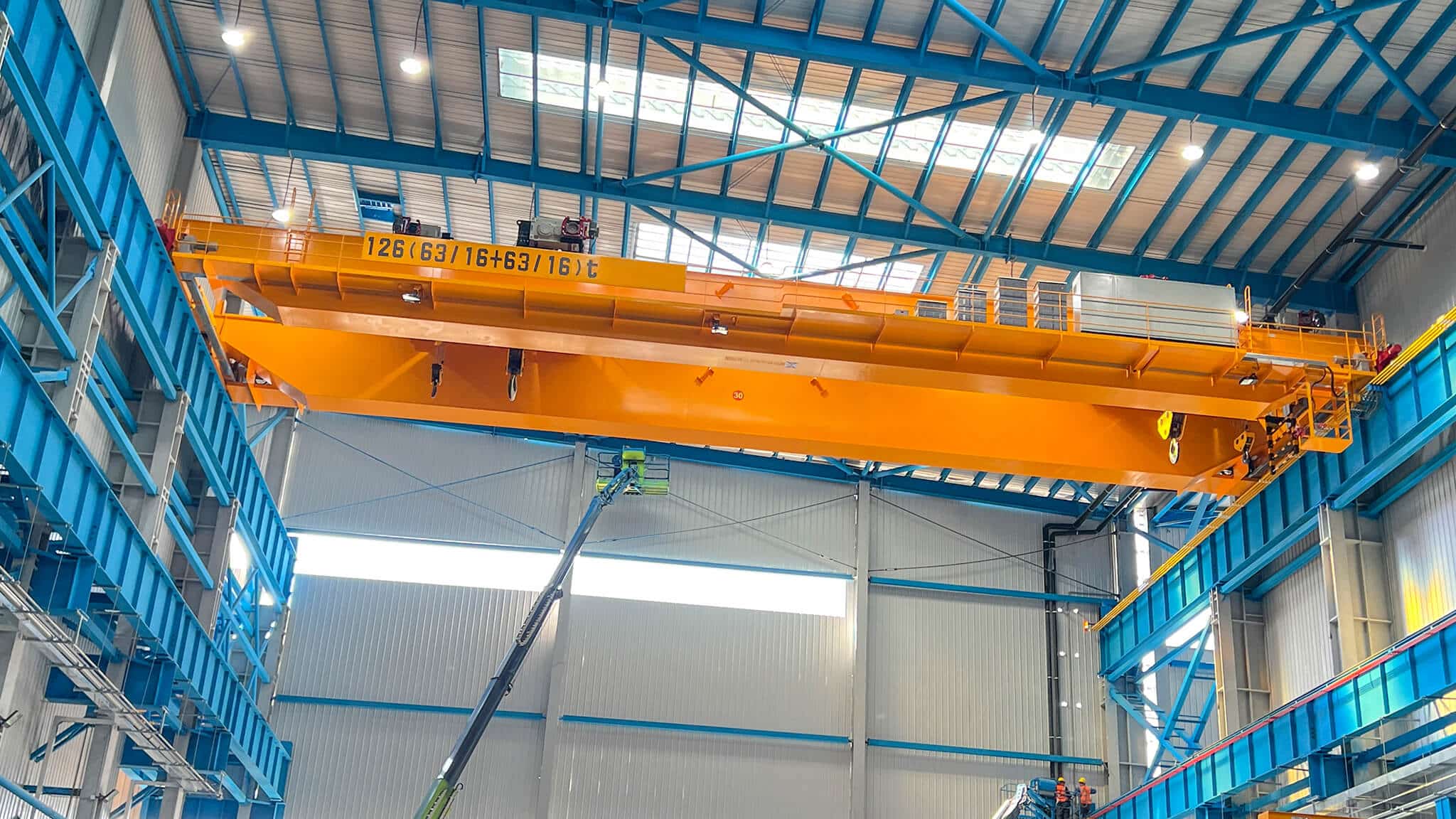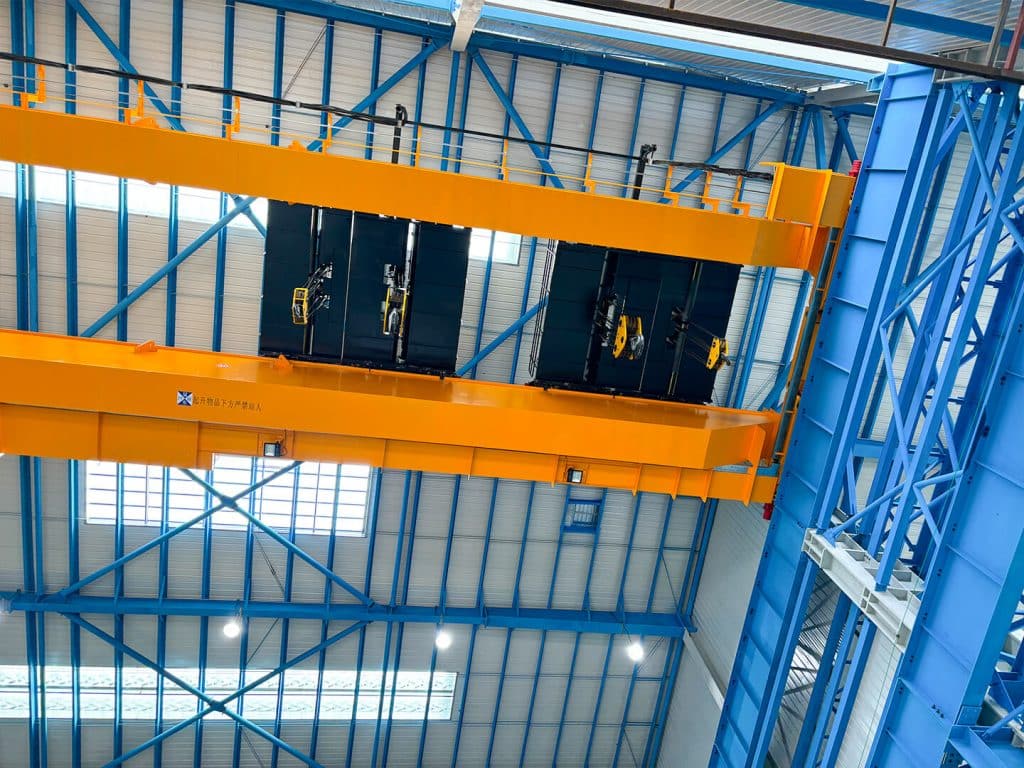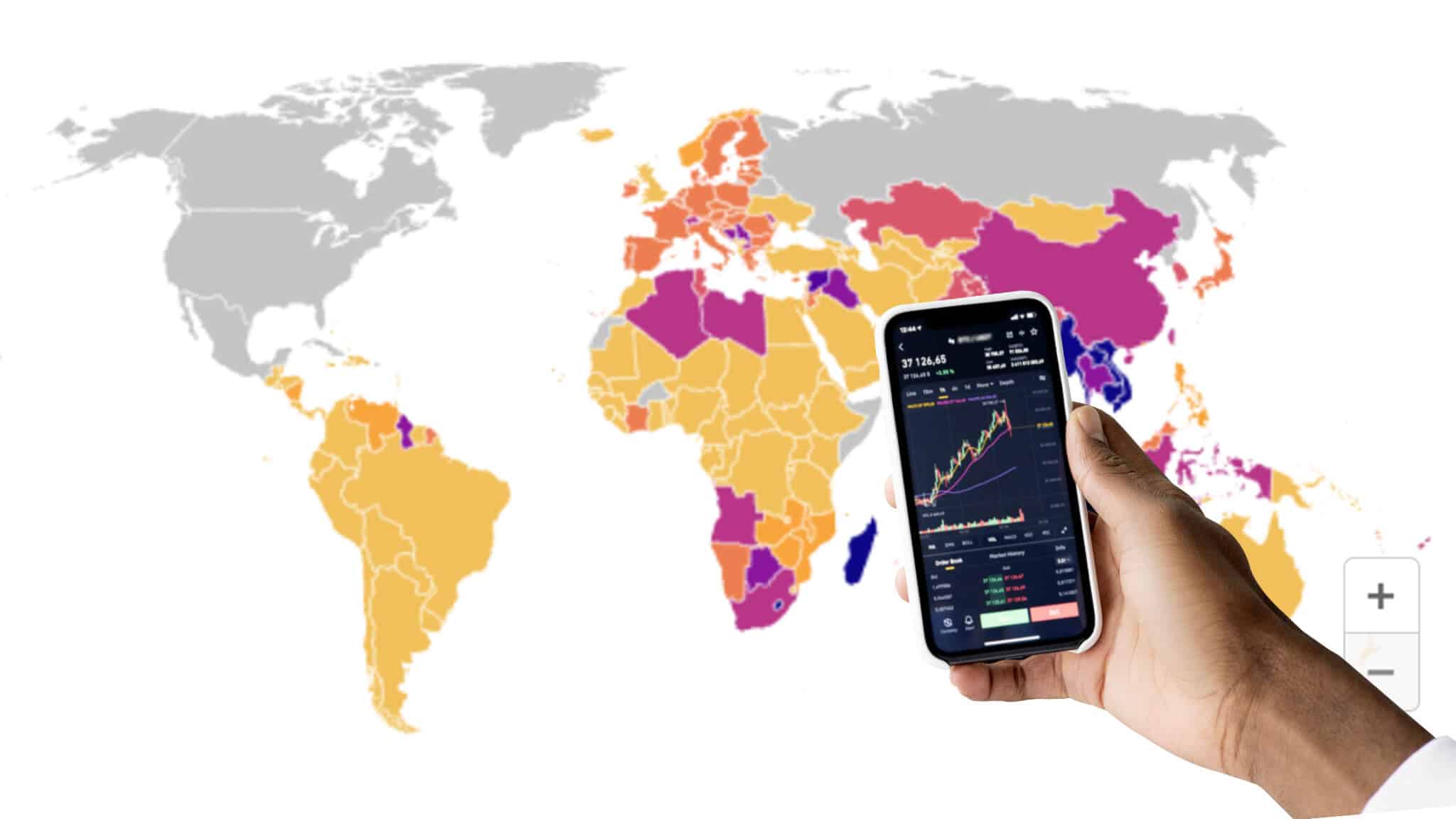
Challenges of 126t Overhead Crane in Paperboard Production
In the realm of industrial machinery, the 126t (63/16+63/16) 4-hook overhead crane stands out as a powerhouse designed for heavy-duty lifting. As part of Guanhui Crane’s project tailored for a paperboard production line, this crane’s impressive capacity and complex configuration bring both efficiency and challenges
Understanding the 126t Overhead Crane Configuration
The 126t (63/16+63/16) 4-hook overhead crane is engineered for high-capacity lifting:

Why Use This Crane in Paperboard Production?
Paperboard production involves handling massive paper rolls, often weighing several tons, which are moved from storage to processing machines. While lighter equipment suffices for smaller tasks, the 126t crane excels in lifting oversized rolls efficiently, boosting throughput. Guanhui Crane’s choice reflects a commitment to scaling production, potentially aligning with high-output goals like 20,000 tons annually, as seen in similar setups.
Design Challenges in Paperboard Production
1. Synchronization of Multi-Hook Systems
- Challenge: Coordinating four hooks across two cranes requires advanced synchronization systems to ensure balanced lifting and precise positioning. Any misalignment could result in uneven load distribution, risking damage to delicate paper rolls or the crane itself.
- Design Consideration: Engineers must integrate sophisticated control systems, such as anti-sway technology and real-time load monitoring, to maintain harmony between hooks. This involves precise calibration of motors, sensors, and steel wire ropes to handle dynamic loads effectively.
Structural Stability and Load Distribution
- Challenge: Supporting a 126t capacity while ensuring stability under dynamic loads demands meticulous structural design. The dual-crane system introduces additional forces, requiring reinforced beams and optimized load paths.
- Design Consideration: Finite element analysis (FEA) is used to simulate stress and strain on the crane’s frame during operation. Materials like high-strength steel are selected to withstand repeated heavy lifting without compromising durability. Additionally, engineers must account for vibration damping and fatigue resistance.
- Design Consideration: Customization is key. Engineers must design the crane to adapt to the facility’s dimensions, ensuring compatibility with storage areas, processing machines, and conveyor systems. This includes precise rail installation and alignment to prevent operational delays.
Operational Challenges and Their Design Solutions
While the above sections focus on design, operational challenges also highlight the importance of thoughtful engineering:
- Precision Handling: The crane’s design incorporates advanced motion control systems to ensure accurate load placement and prevent damage to paper rolls.
- Safety Risks: Redundant systems and fail-safe mechanisms are embedded to minimize the risk of accidents.
- Environmental Factors: Anti-corrosion coatings and sealed components protect the crane from the harsh conditions of paperboard production facilities.
The 126t (63/16+63/16) 4-hook overhead crane, as deployed in Guanhui Crane’s paperboard production line, is a testament to engineering prowess and ambition. While it excels at lifting heavy paper rolls, its design challenges—synchronization, structural stability, integration, environmental adaptability, maintenance, and cost—highlight the complexity of creating machinery for high-output facilities. By addressing these challenges through innovative solutions, manufacturers can harness its full potential, balancing efficiency with practicality. This crane isn’t just a tool; it’s a feat of engineering mastery tailored for modern industrial demands.


